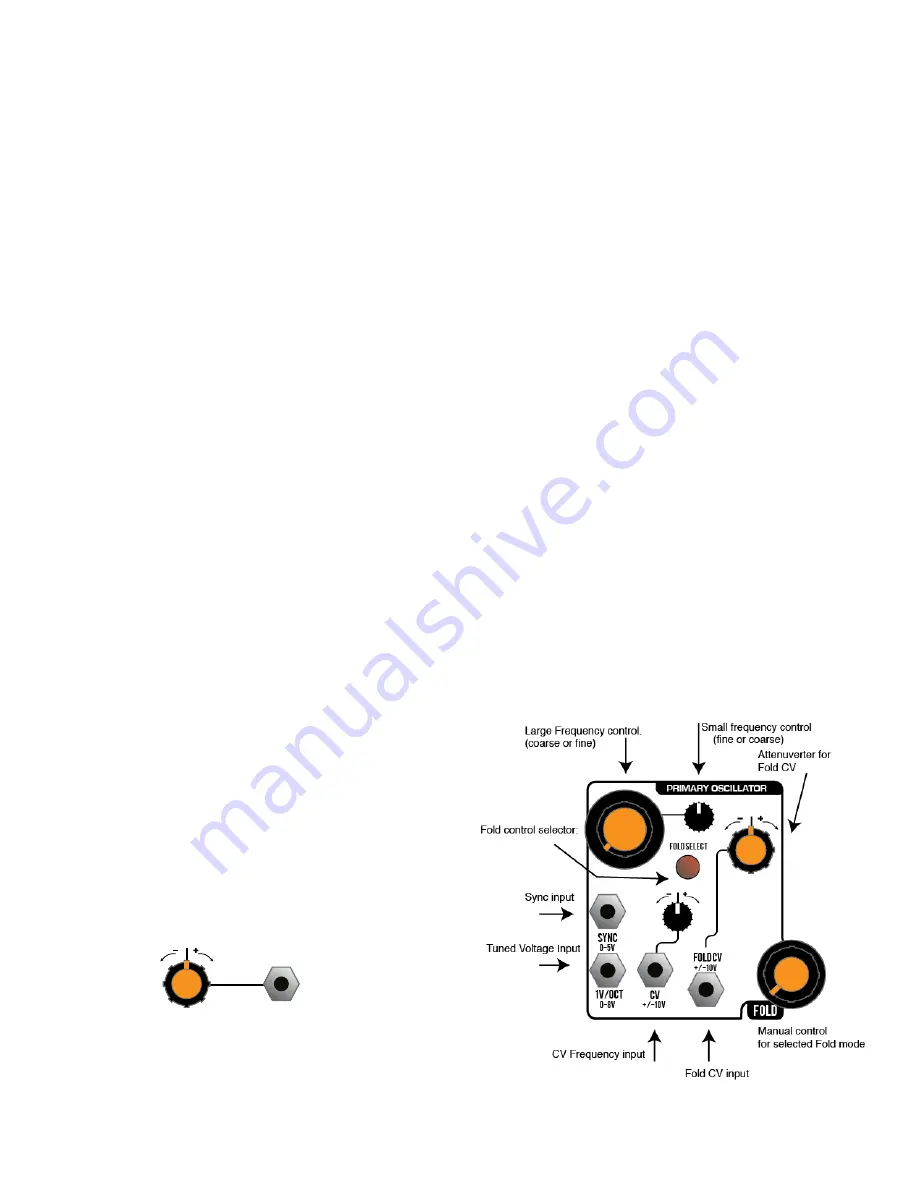
FUNDAMENTALS
The Hertz Donut Mark III is a complex oscillator utilizing the finest digital sound synthesis techniques from the
mid-1980s. It uses a combination of phase distortion and thru-zero frequency modulation (FM), and the synthesis
algorithm provides access to an auxiliary oscillator/output as well as a simplified control for the total effect of the
modulation bus. An audio input acts as a full-bandwidth source for more complicated modulations involving external
devices. The unison detune function offers beautiful glass chorus voicing, and the phase distortion parameters have
been chosen to provide coherent timbre warping even under heavy frequency modulation. The module contains the
Mark III morphing preset manager which facilitates storage and performance of all module parameters.
GETTING STARTED
When the coarse tune is set to its minimum position and the fine tune is set to the middle position, the generated
frequency will be 16.35hz (note C0) with no external voltages applied. Patching a 1 volt per octave tuned sequencer,
quantizer, or keyboard voltage into this jack (such as the STILLSON HAMMER or ARGOS BLEAK) will change the
oscillator’s frequency to the desired note. If the control voltage is set so that C0 is equivalent to a value of 0 volts, then
the note names shown on the Hertz Donut’s display (and the generated frequency) will match the input voltage. Listen
to the results of your patch programming at any of the jacks in the OUTPUT section. The MAIN output will contain the
most straightforward example of your programming. The AUX output behavior is selectable in a menu. The MIX output
is a simple analog combination of both outputs.
SCREEN SAVER
The Hertz Donut’s display is an OLED. It is set to a brightness to provide the best balance between visibility and long
life. To preserve the life of the OLED, it will turn off if a button or encoder is not used for 10 minutes. To turn it back on,
press a button or turn the encoder.
MK III MENU SYSTEM
Most function blocks in Industrial Music Electronics modules have hidden menus associated with them. To access
them, hold down the rotary encoder button and push the associated button. The menu will appear on the display. Turn
the encoder to select the desired menu item. Push the encoder to select the item, and turn the encoder to change
the selected item. Push the encoder button again to enter your selection. Exit the menu by pressing any of the other
buttons. If a button does not have a menu associated with it, then the button press combination will usually invoke
another shortcut function.
CV INPUTS
Most CV inputs on the Hertz Donut accept full-scale,
bipolar control voltages with a range of +/-10v. The response
of the various inputs are scaled to provide a musically
useful range of motion within the typical range of +/-5V,
with additional reactivity far outside of this range. The
attenuverters use a nonlinear curve to allow a typical control
voltage to subtly modulate a small range of the parameter, or
full-swing travel without the use of external amplification.
PRIMARY OSCILLATOR
The two frequency controls set the coarse and fine tuning frequencies of the oscillator. Their specific functions
may be reversed in the MAIN “GLOBAL” OPTIONS menu by pressing the Encoder and EXT button, scroll down to
Turn
COUNTER-
CLOCKWISE
to SUBTRACT
Turn CLOCKWISE to ADD CV to parameter
“Attenuverter”
CV Input




















